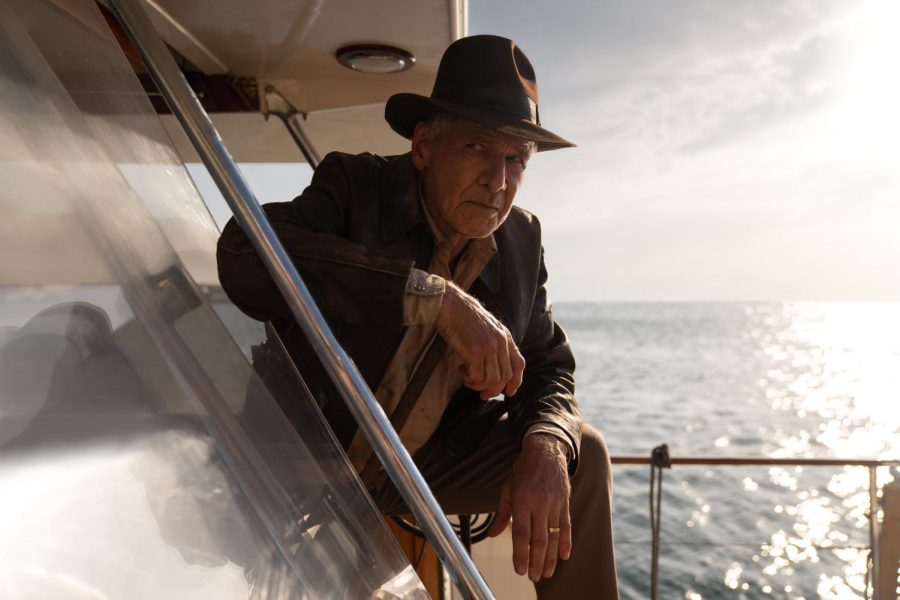‘Indiana Jones and the Dial of Destiny’ marks Harrison Ford’s final return as iconic snarky adventurer
June 29, 2023
“Indiana Jones and the Dial of Destiny” follows the recently retired Indiana Jones (Harrison Ford) as he’s once again dragged into conflict with Nazis by his goddaughter Helena (Phoebe Waller-Bridge) to hunt for a dial that could alter the course of history.
As the final installment in the story of the beloved Indiana Jones, this film does a lot well and a lot wrong. The film’s greatest strength and weakness are its reliance on nostalgia. While nostalgia facilitates many flashbacks to World War II-era Indy and references his hatred of snakes before a deep sea exploration, it isn’t enough to mask the flaws of a mediocre script. Often, the narrative seems to neglect logic simply because writers and directors assumed audiences only wanted to relive this nostalgia. That said, John Williams’ excellent score sometimes comes close to hiding the imperfections.
The script’s main issue involves its side characters. Apart from Waller-Bridge’s Helena, the side characters are inadequately fleshed out and lack character development or motivation. While Indy and Helena understandably have the most growth, other characters shouldn’t be ignored. Many characters’ actions also feel irrational, such as when Indy makes a decision toward the film’s end that is very out of character for someone seeking to preserve history for future generations.
For years, Indiana Jones was iconic in cinema — not because of his great track record as a hero like Captain America or John McClane, but rather due to his morally gray nature. He’s human. He’s always demonstrated flaws in his treatment of others, priorities in life and general snarkiness. Although the film mostly preserves these traits, Indy is more akin to modern heroes without a single flaw; Helena instead takes up the mantle of a morally gray hero. While this will leave audiences wanting a sequel centered around her antics, it detracts from everything that made Indy so relatable.
The film includes two glaring technical problems: the de-aging used in flashback sequences and the heavy reliance on CGI. To further explain plot motivations, “Dial of Destiny” features flashback sequences of a younger Indiana Jones. While the de-aging of Harrison Ford is better executed than past uses of de-aging technology, the visuals are still slightly uncomfortable. Regarding CGI use, entire action sequences clearly take place on a green screen. While audiences might not care, many will be surprised by the movie’s lack of practical effects.
While these flaws may lead one to believe “Indiana Jones and the Dial of Destiny” is awful, it really isn’t. Thanks to the strong leads of Ford and Waller-Bridge and many campy elements like the dial’s magic power and comically ignorant antagonists, the film makes for a fun adventure flick that will leave viewers grinning from ear to ear despite its drawbacks.
“Indiana Jones and the Dial of Destiny” marks a middling conclusion to the story of the beloved Indiana Jones. While issues like CGI and questionable writing bare their fangs, audiences can enjoy the wonderful performances of the two leads and all the nostalgic moments that cater to the rugged adventurer’s adorers.
3 snakes out of 5



